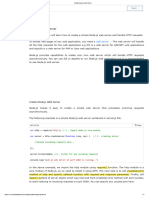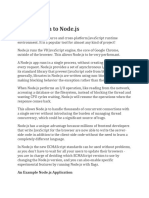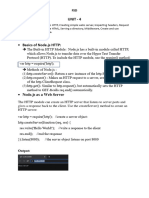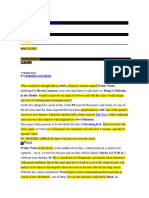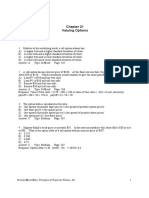0% found this document useful (0 votes)
6 views3 pagesCreating A Simple Web Server
This document will guide you through the process of setting up and running a basic web server using Node.js. This is a fundamental first step for building any web application with Node.js.
Uploaded by
ammar.interneeCopyright
© © All Rights Reserved
We take content rights seriously. If you suspect this is your content, claim it here.
Available Formats
Download as DOCX, PDF, TXT or read online on Scribd
0% found this document useful (0 votes)
6 views3 pagesCreating A Simple Web Server
This document will guide you through the process of setting up and running a basic web server using Node.js. This is a fundamental first step for building any web application with Node.js.
Uploaded by
ammar.interneeCopyright
© © All Rights Reserved
We take content rights seriously. If you suspect this is your content, claim it here.
Available Formats
Download as DOCX, PDF, TXT or read online on Scribd
/ 3

